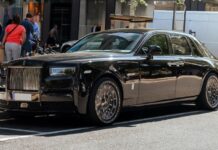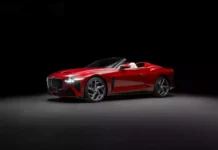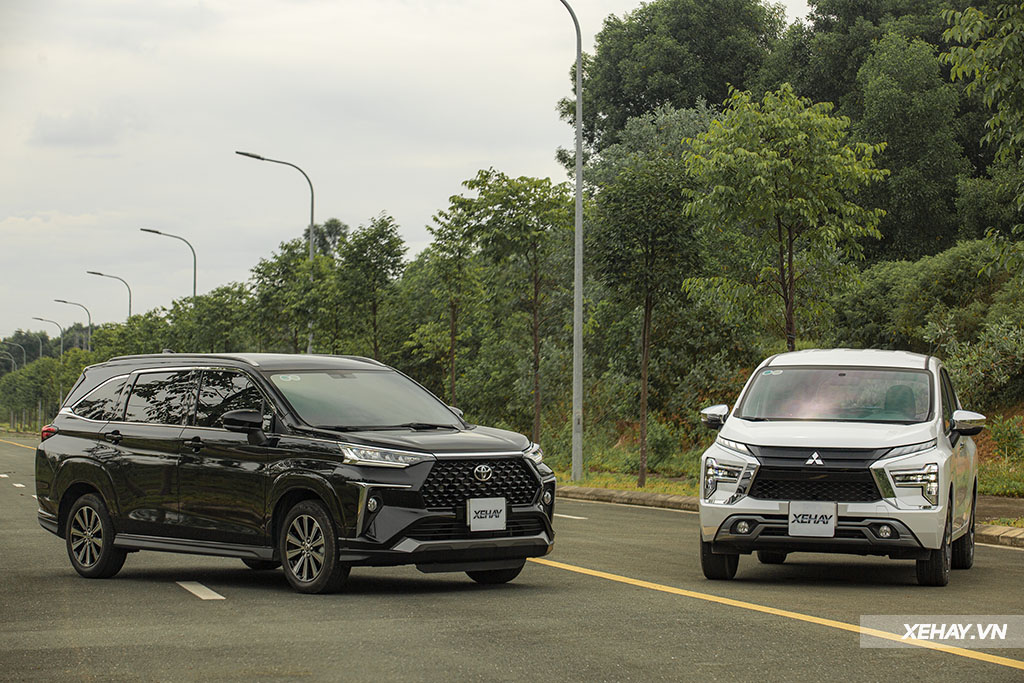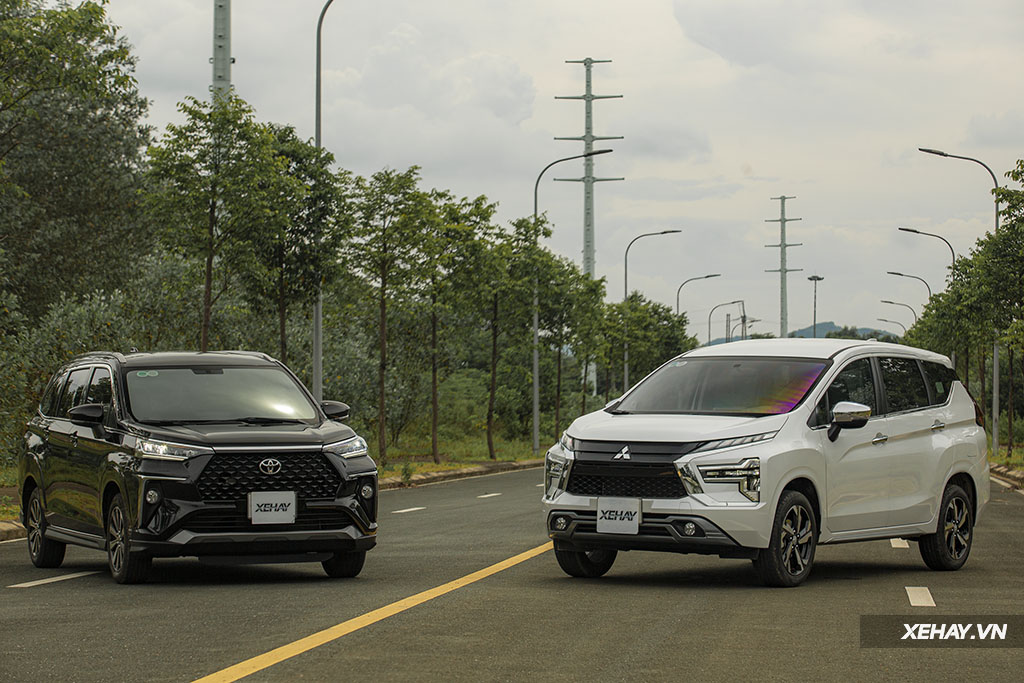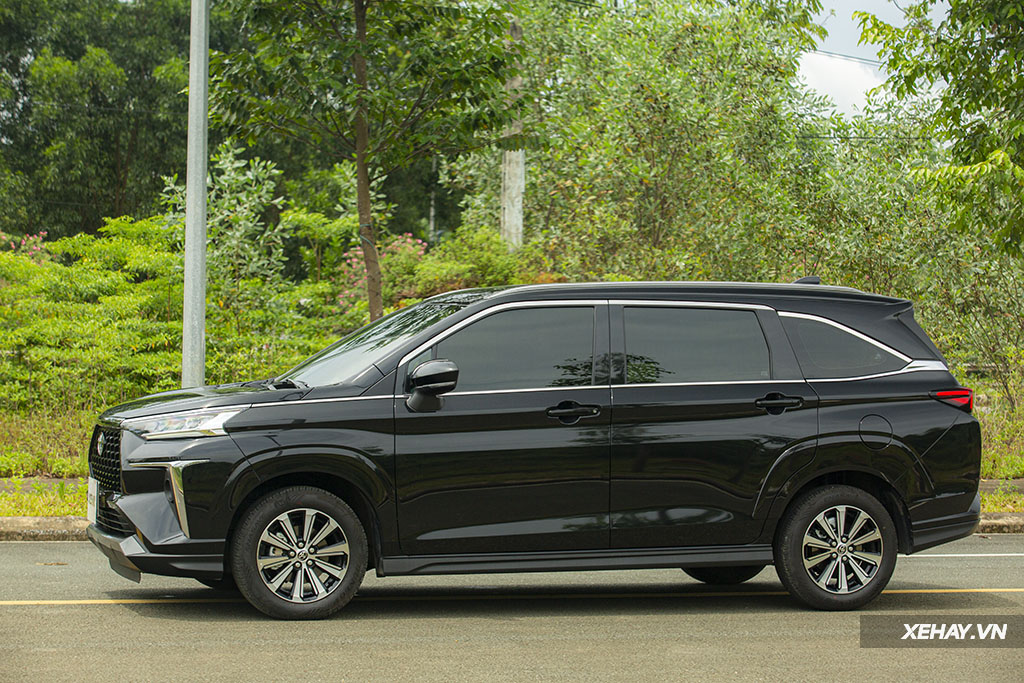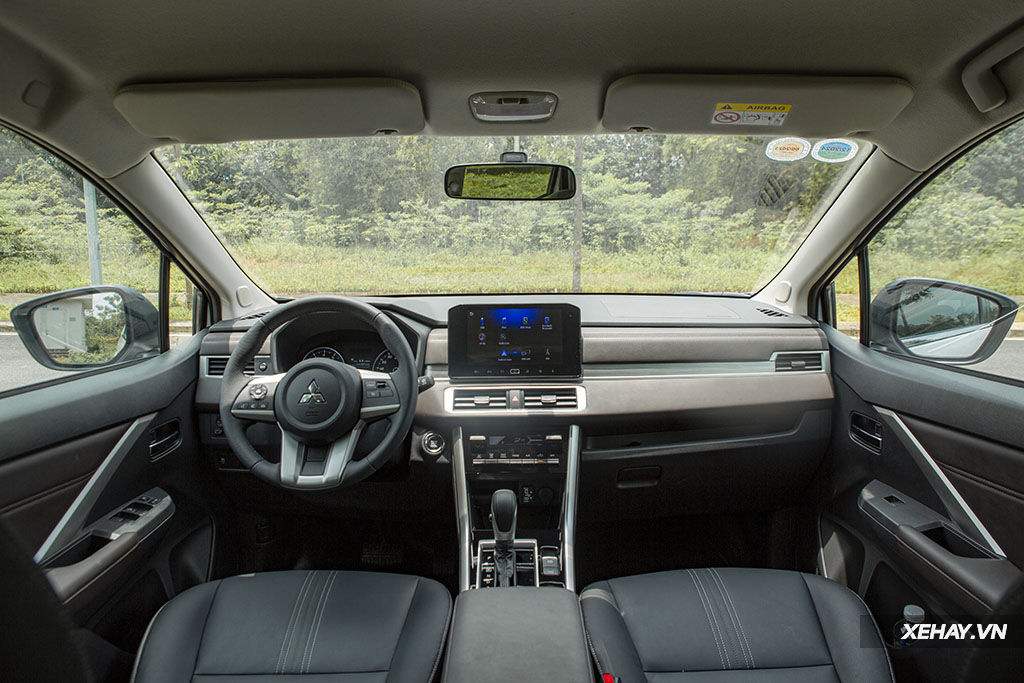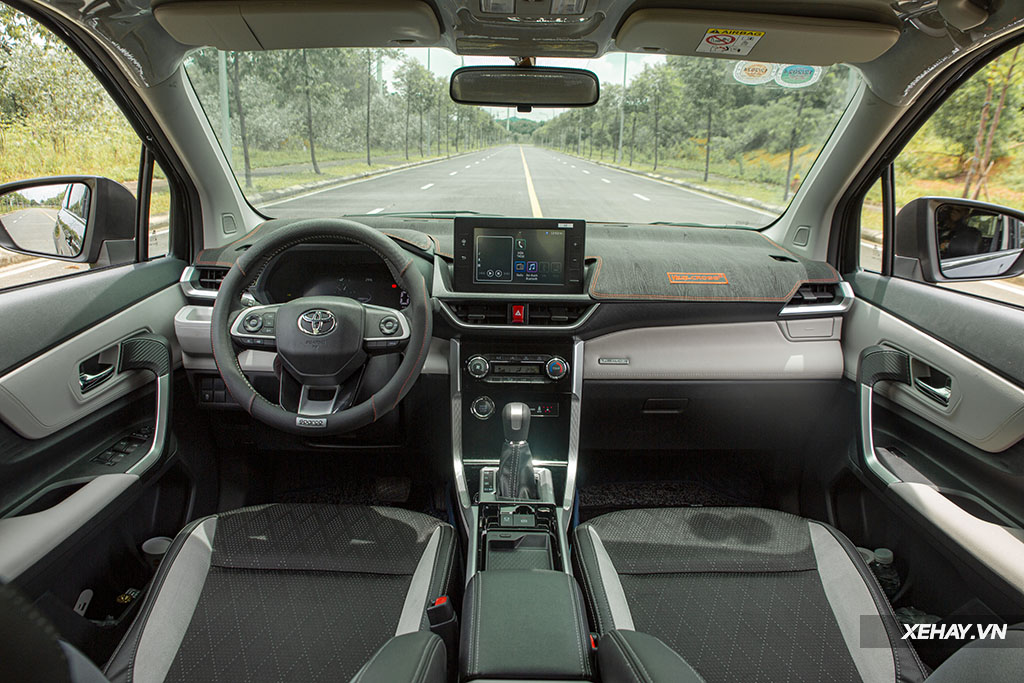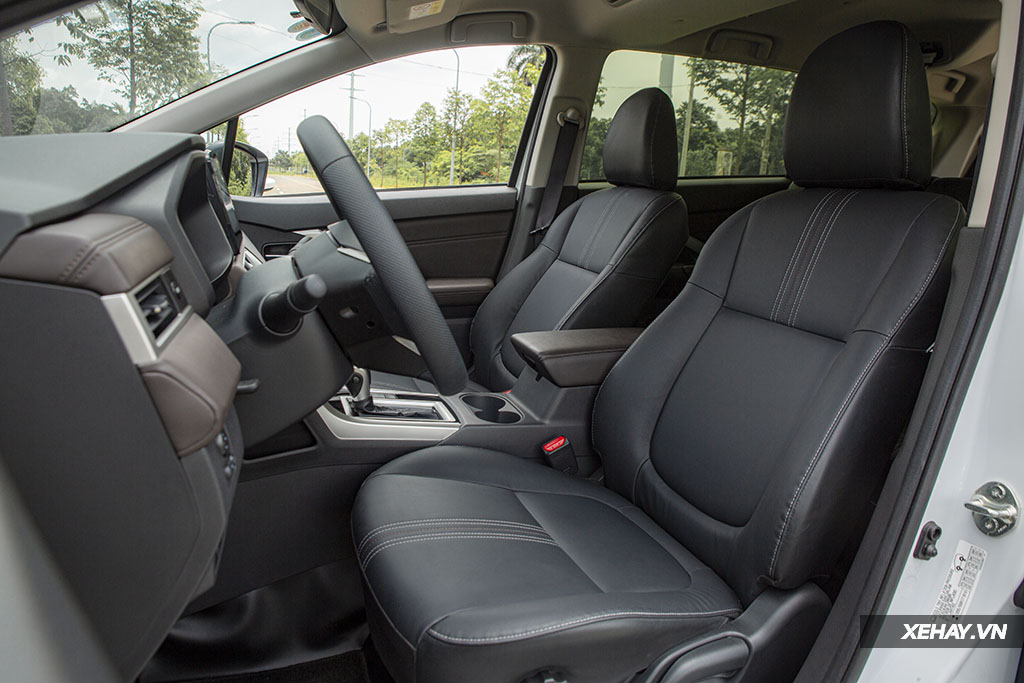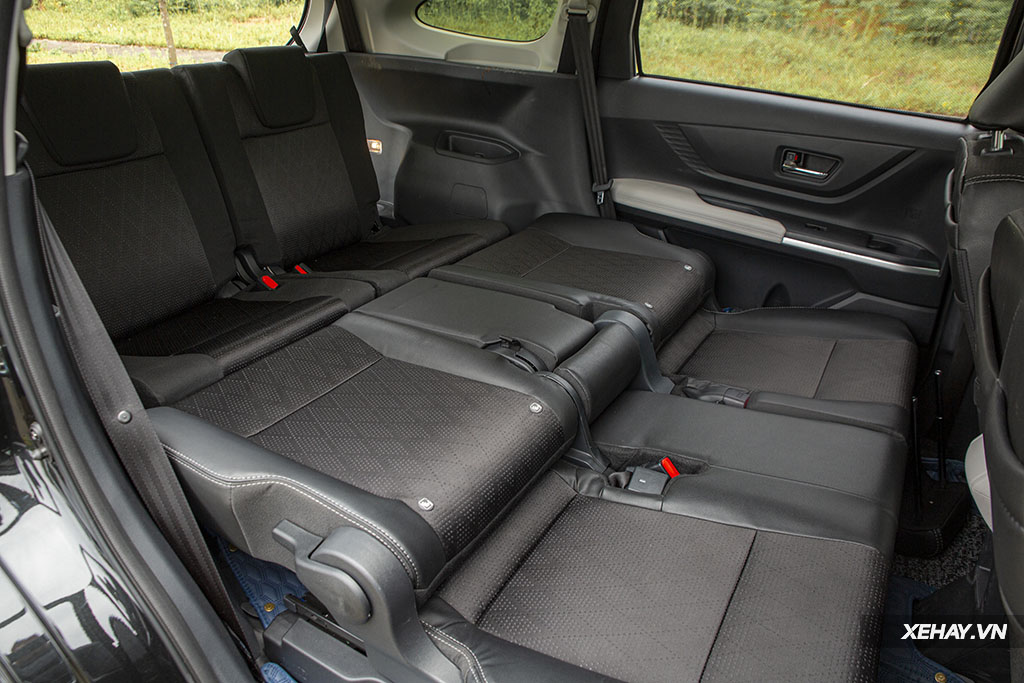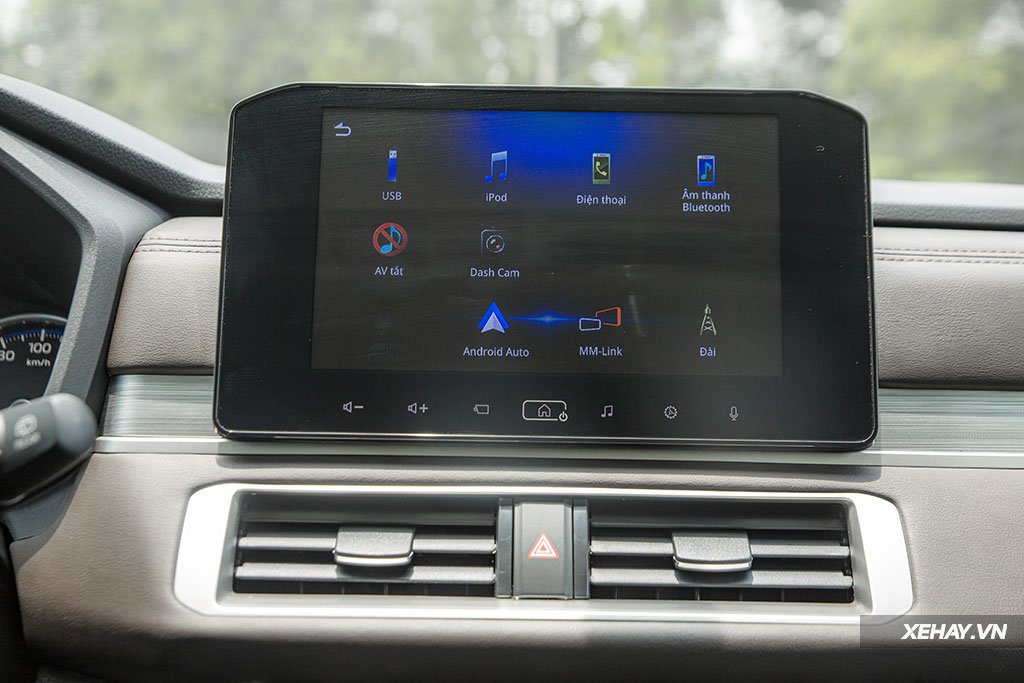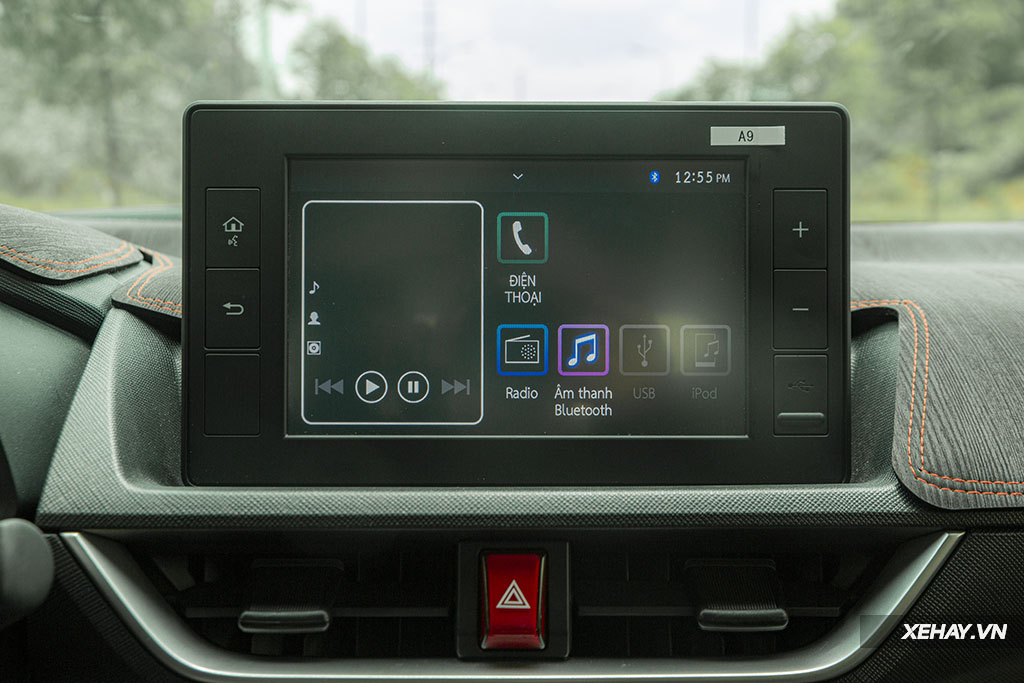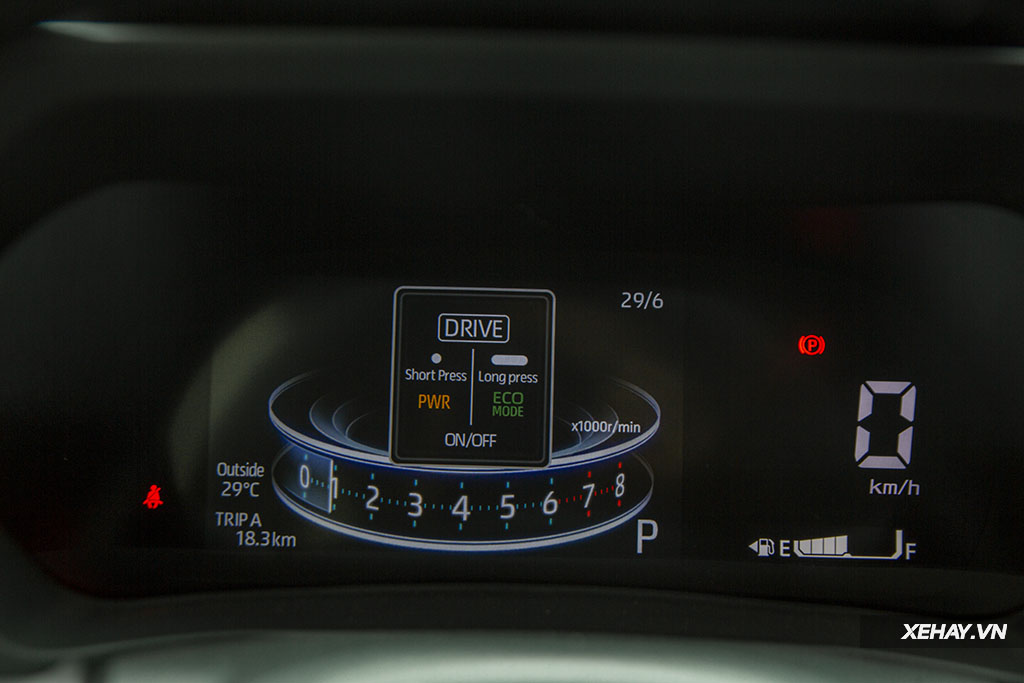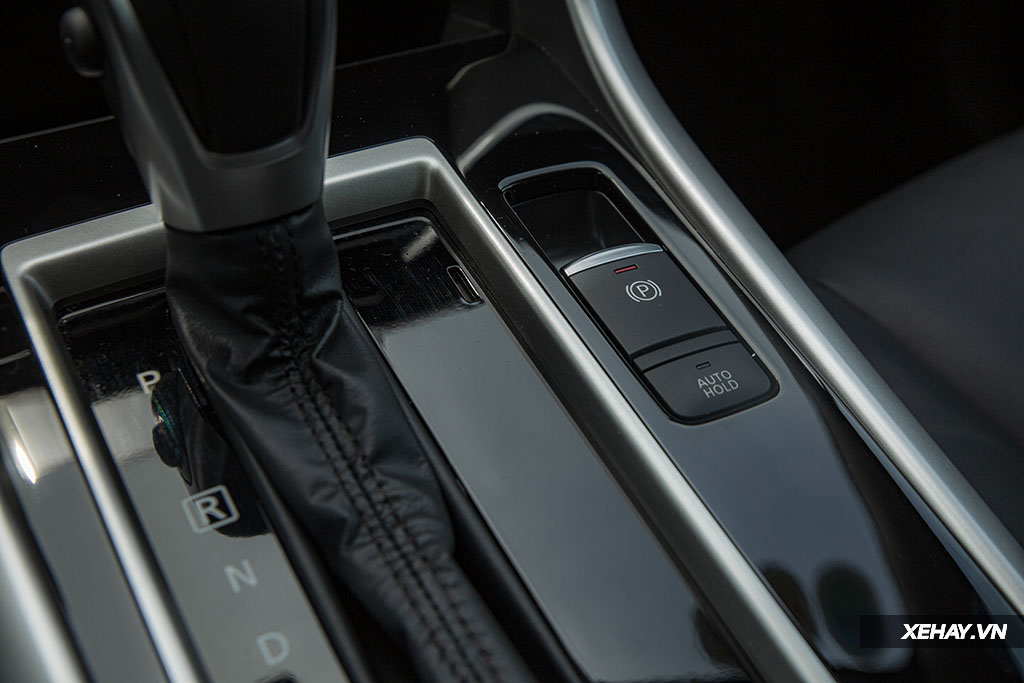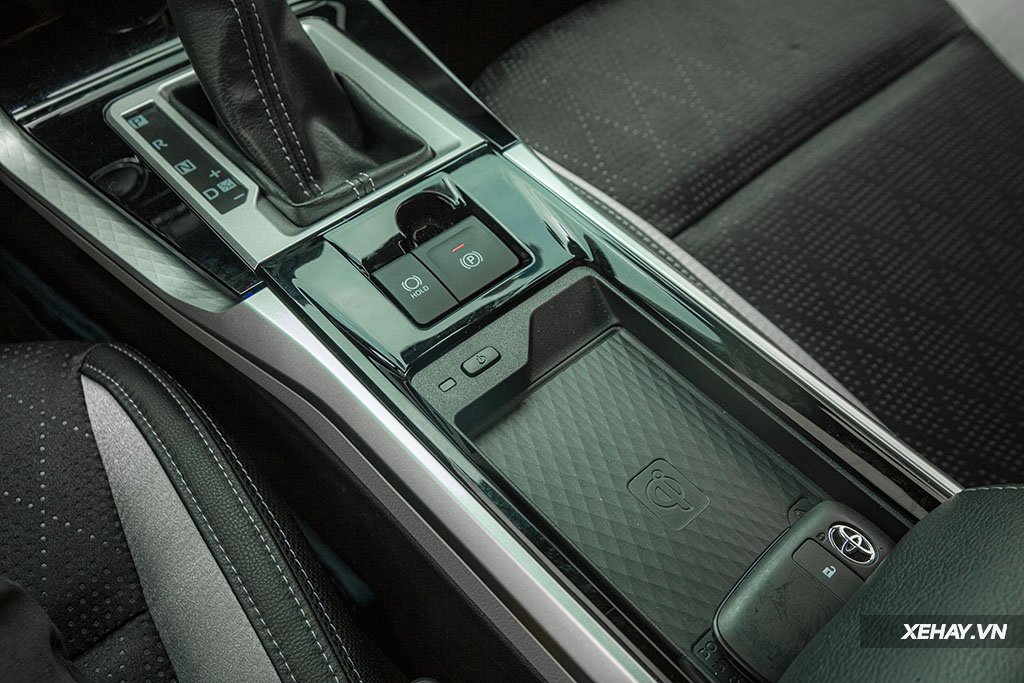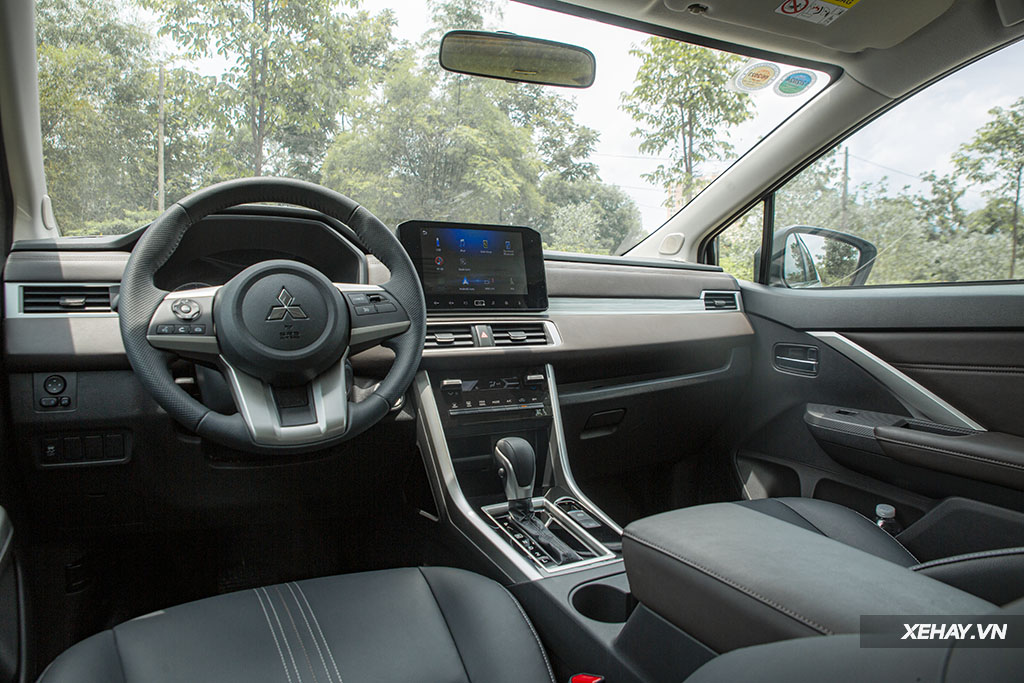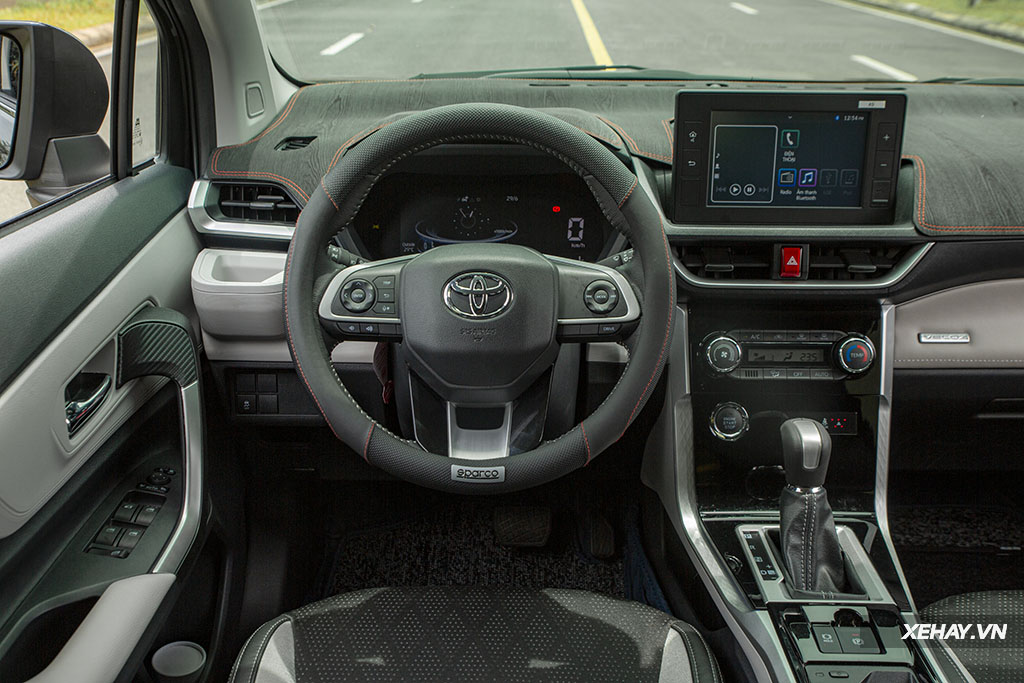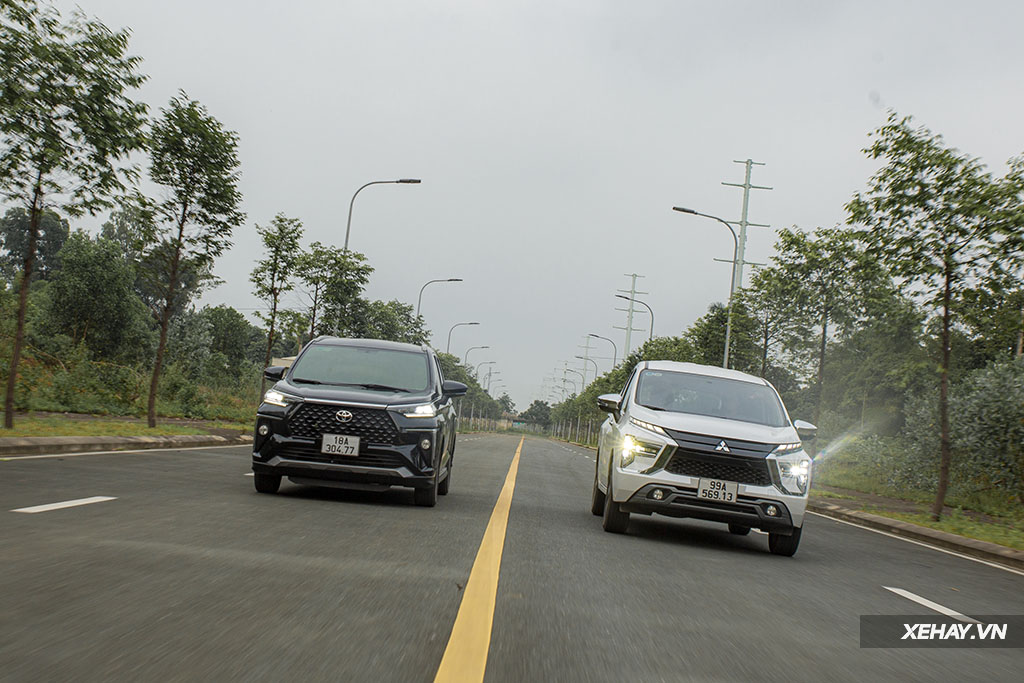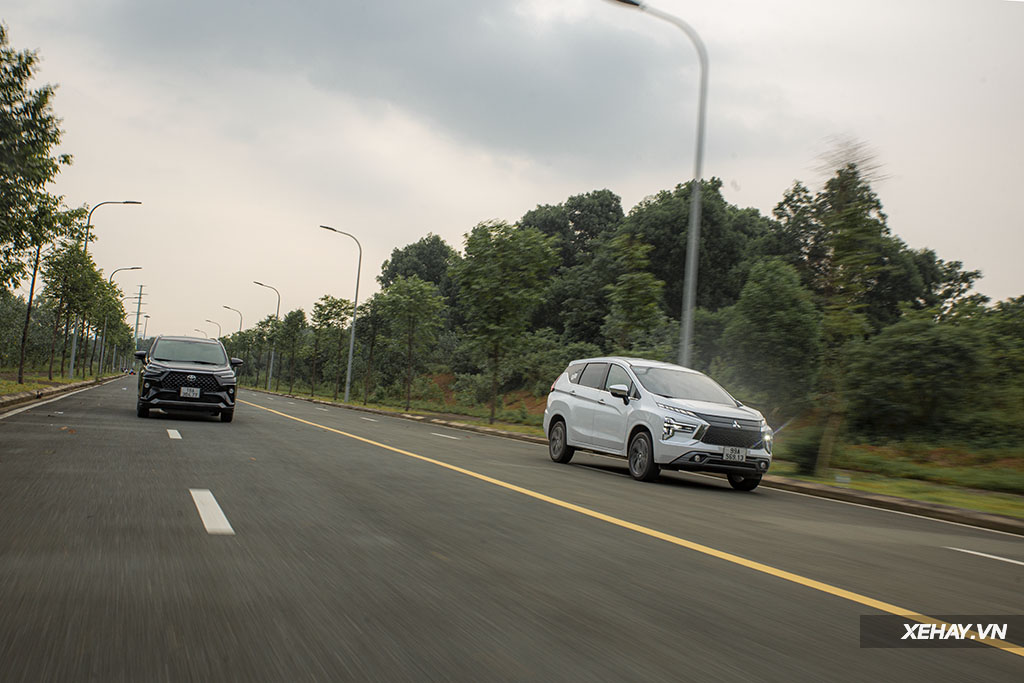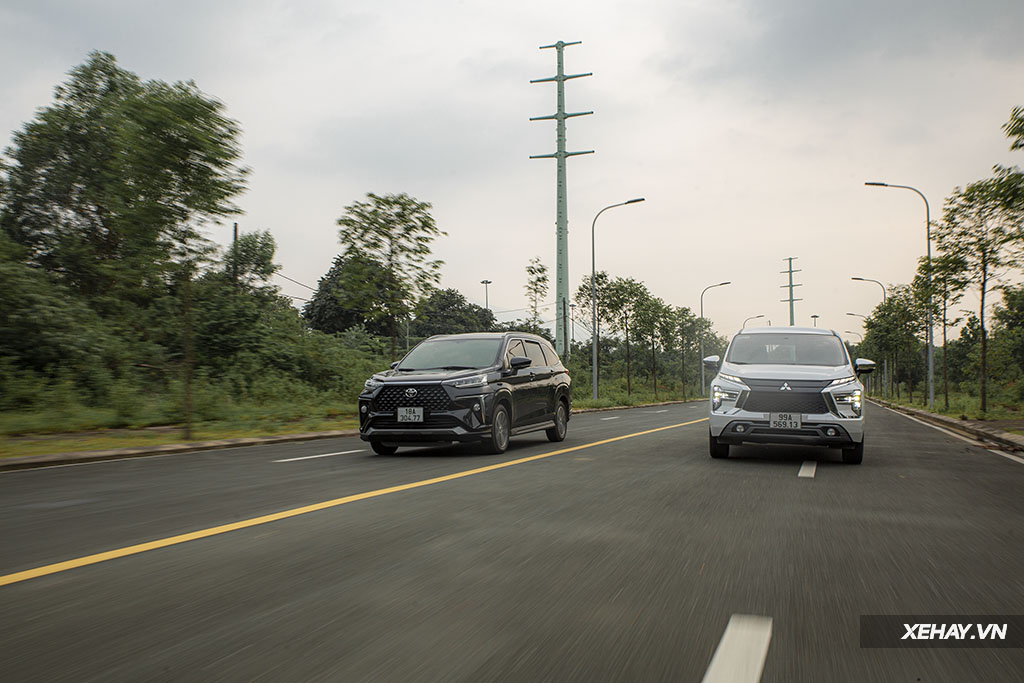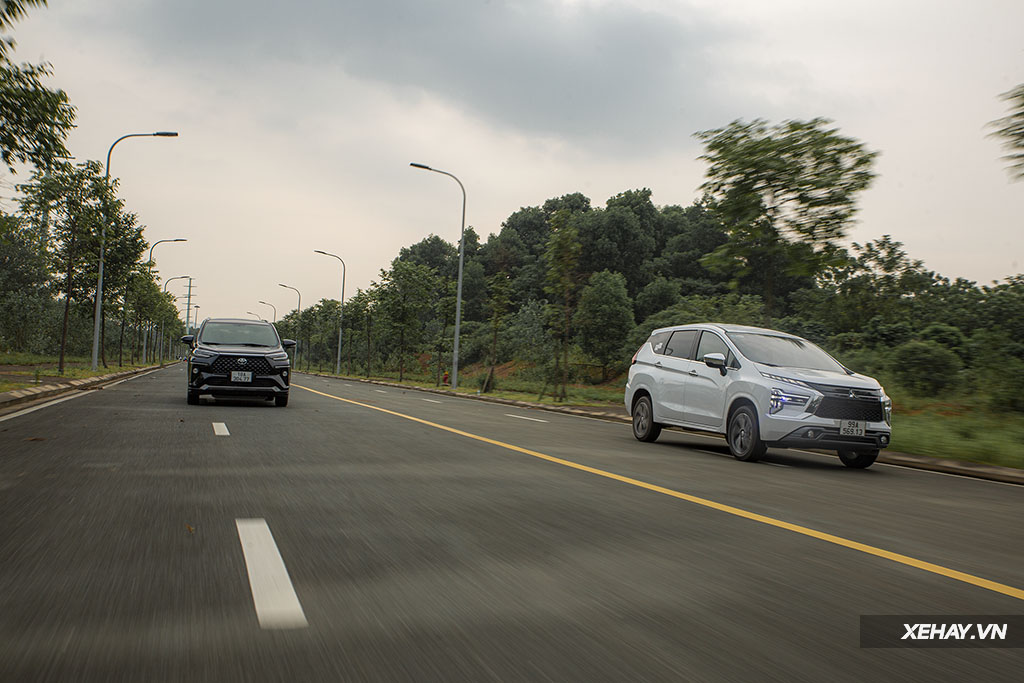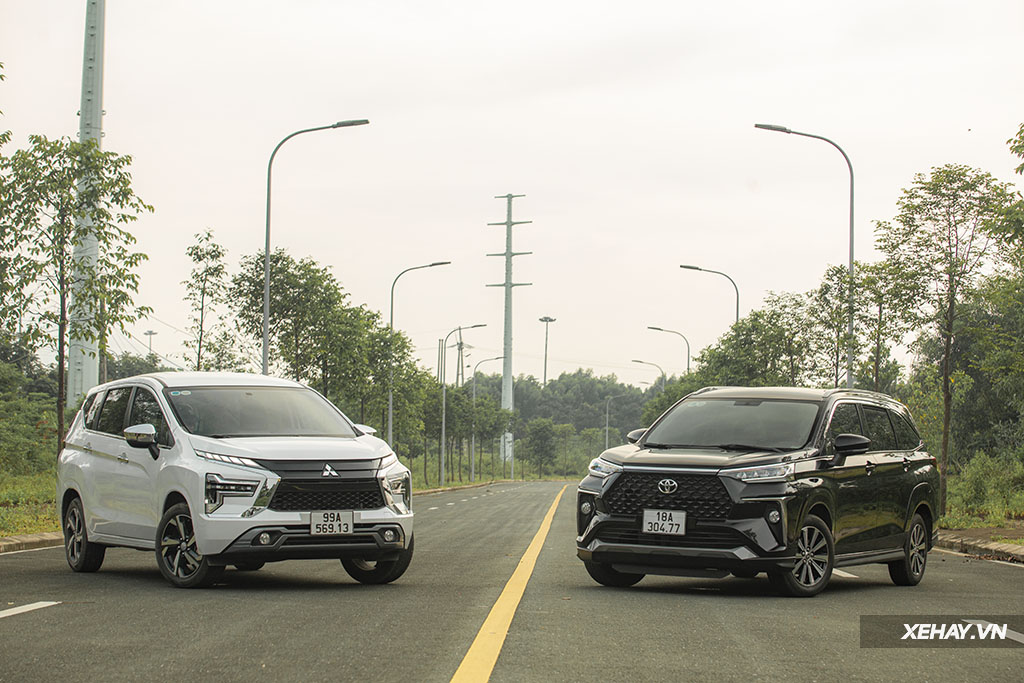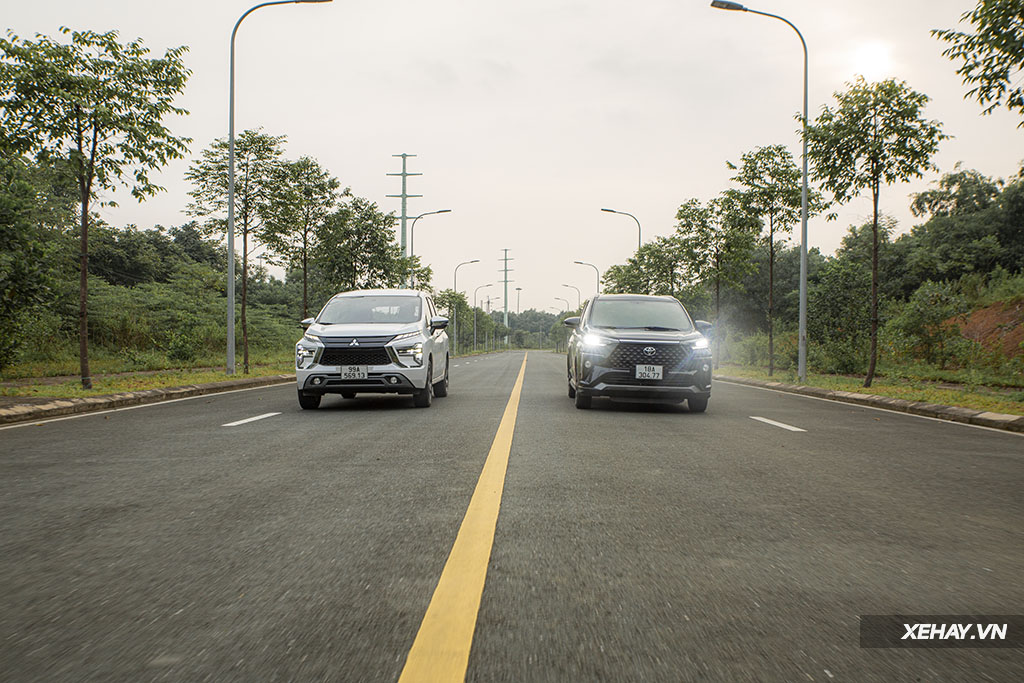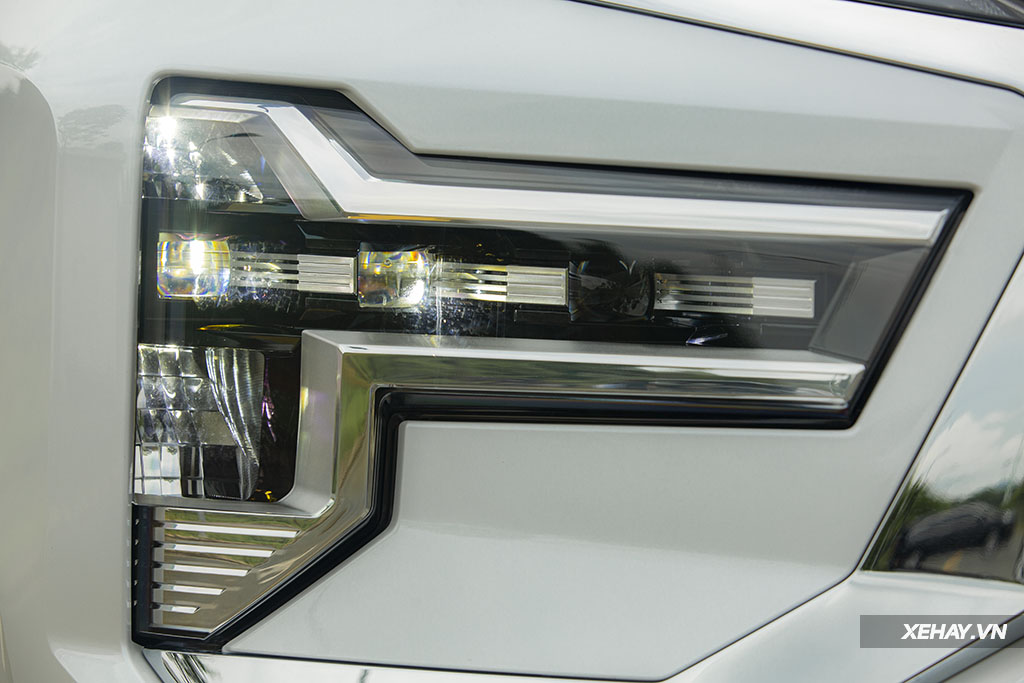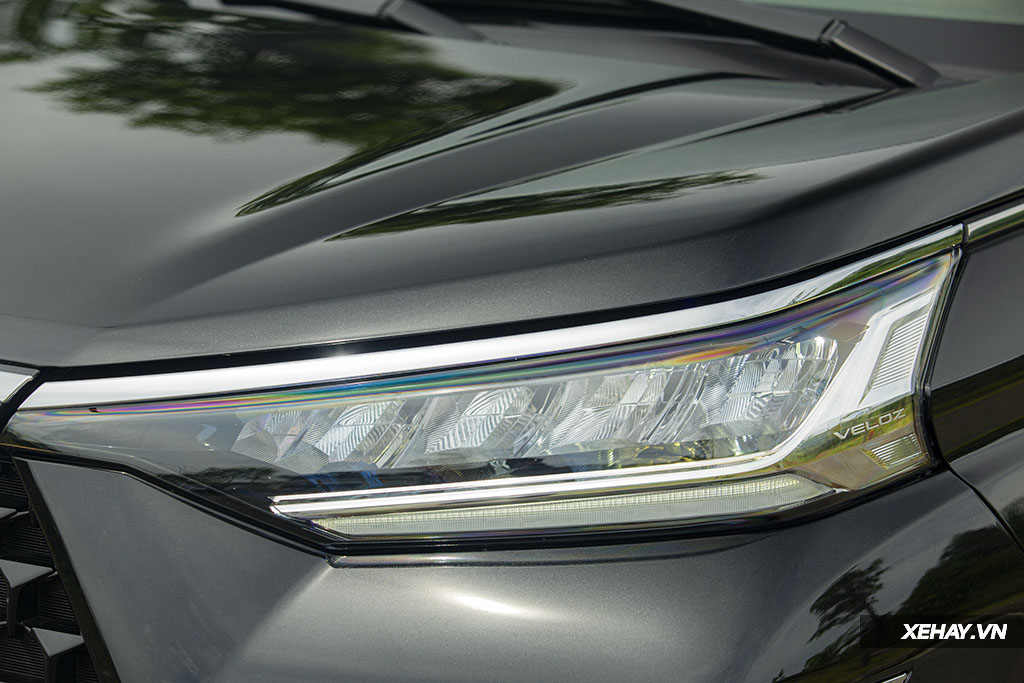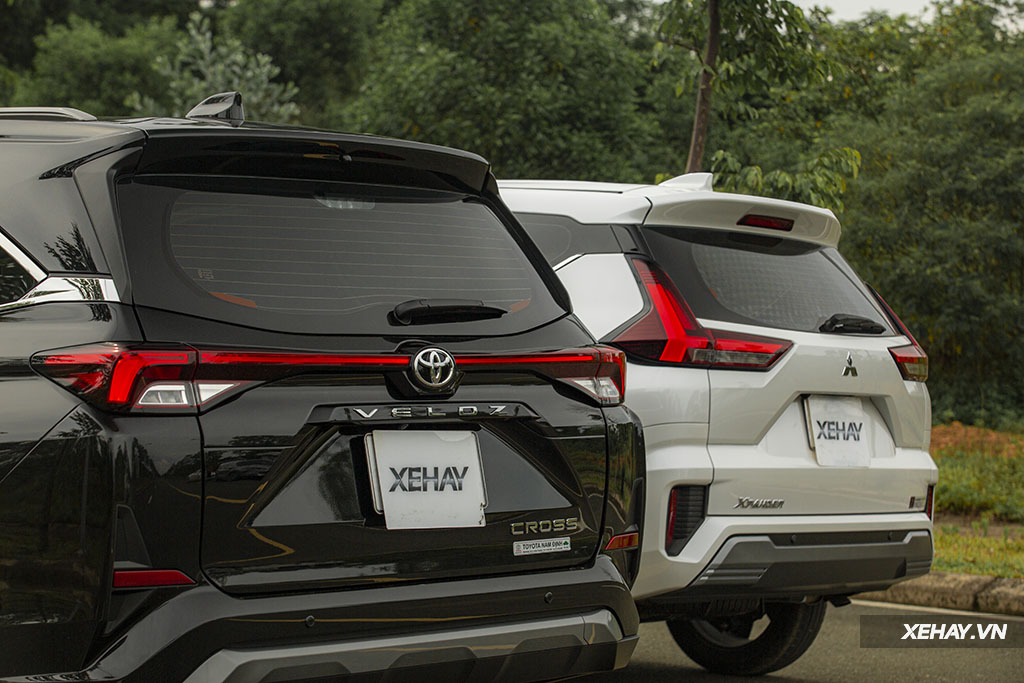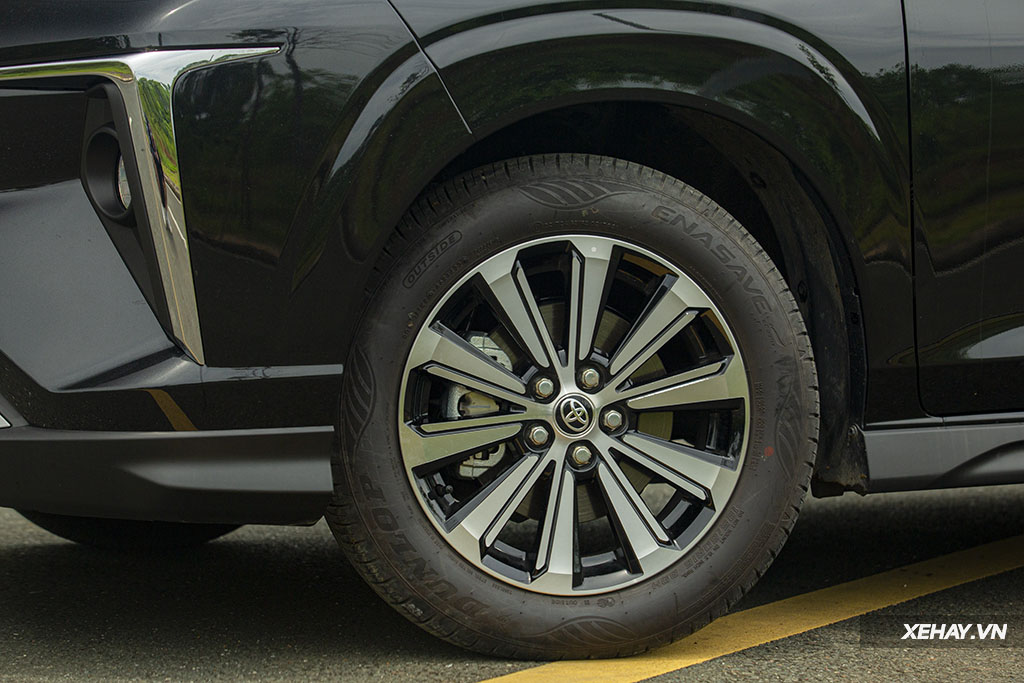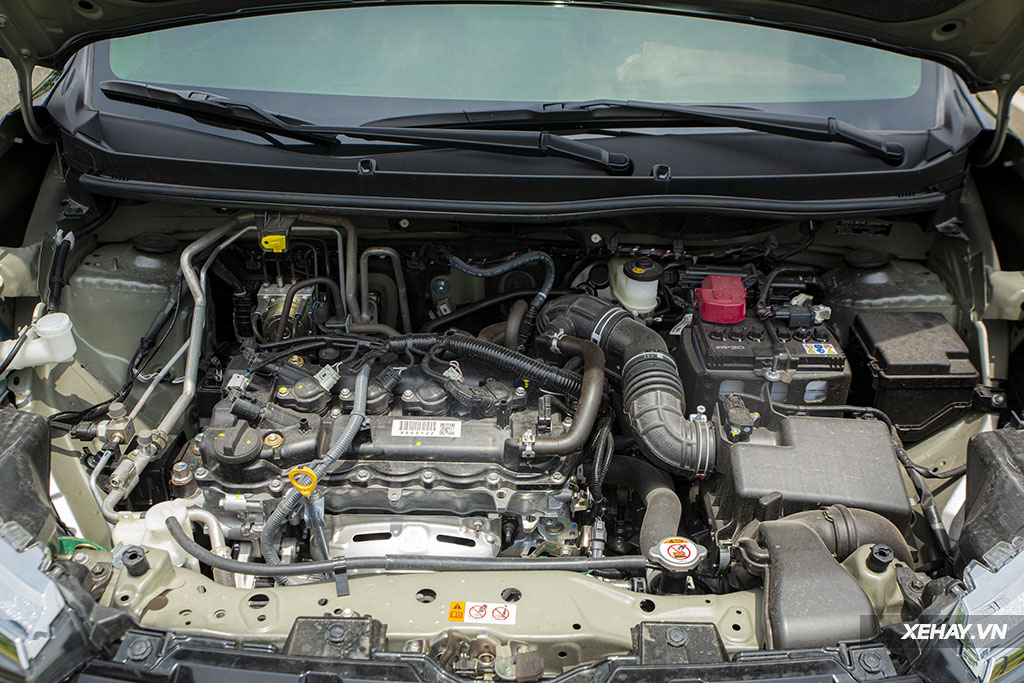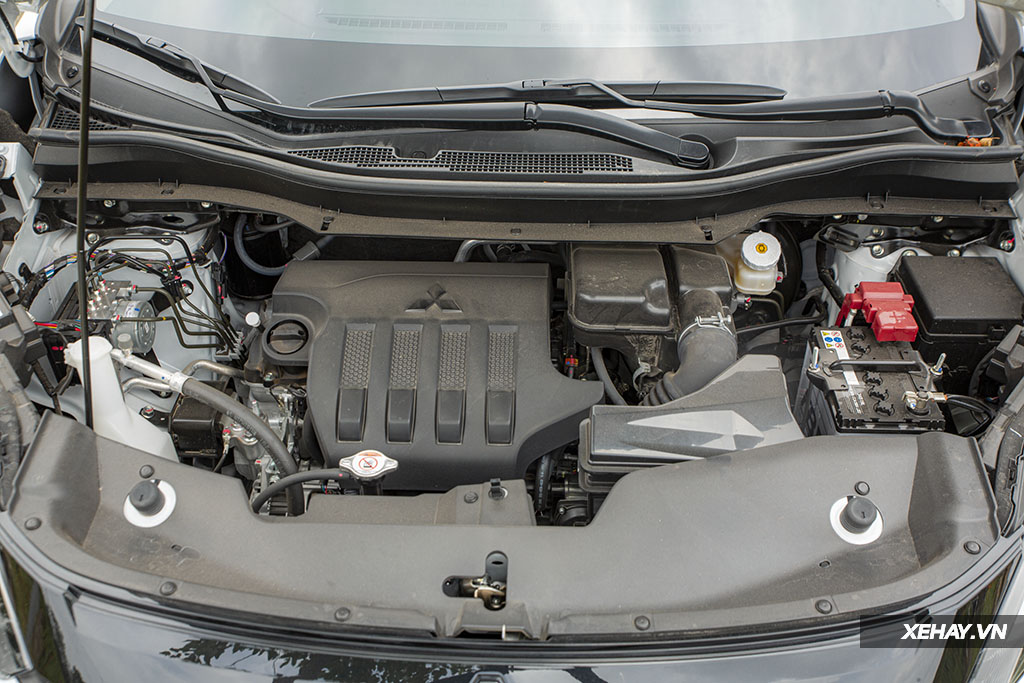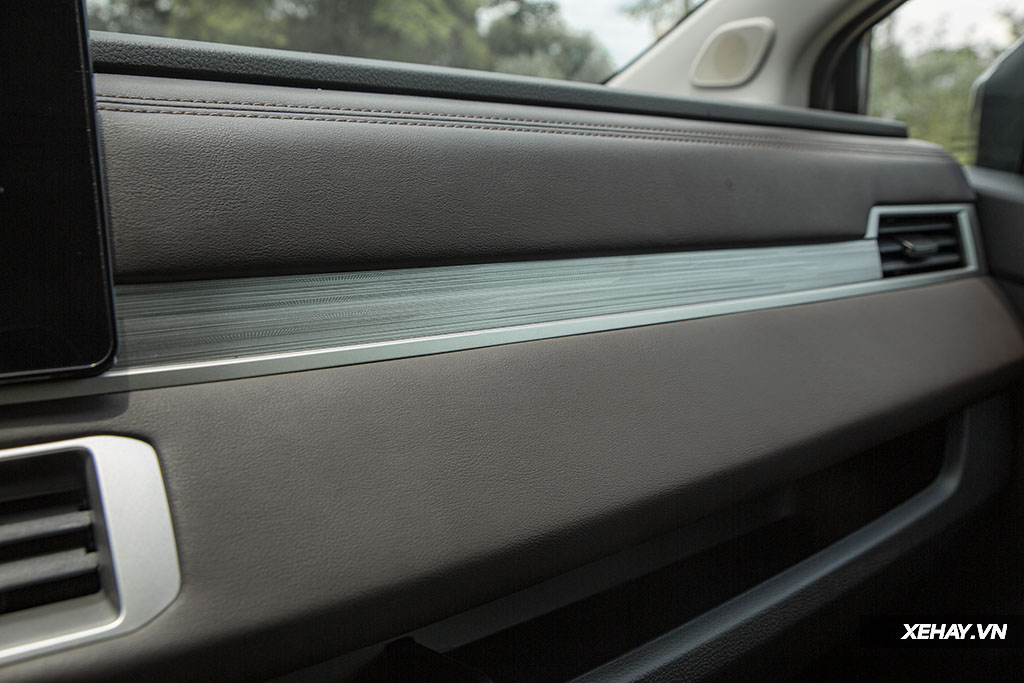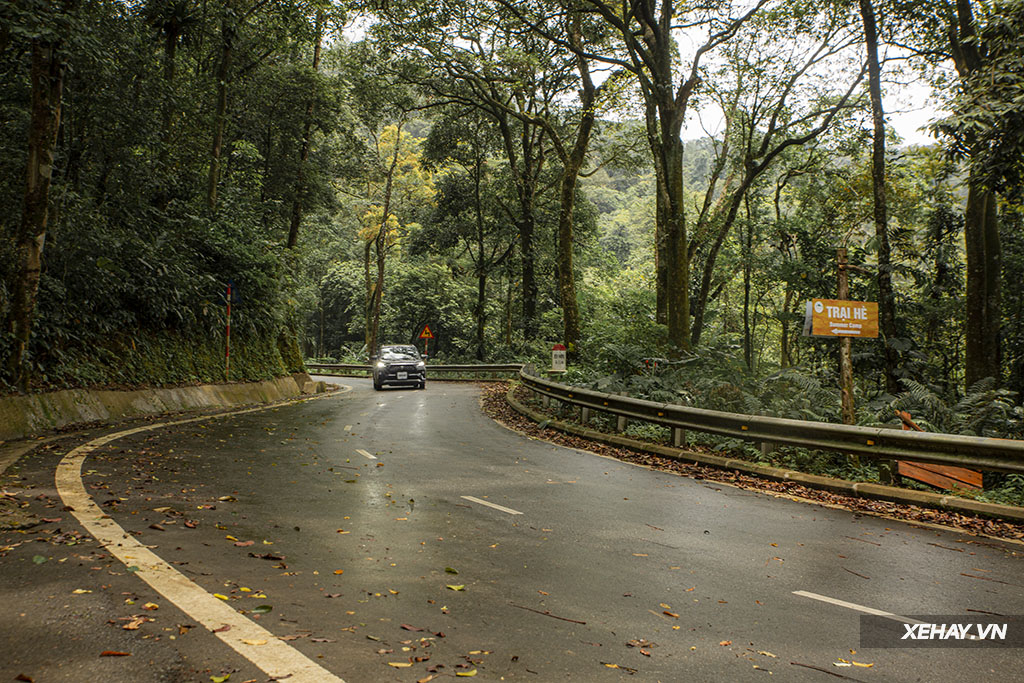Entering 2022, the MPV segment welcomes an extremely attractive newcomer – the Toyota Veloz; while Mitsubishi quickly updates the facelift version for the Xpander after 3 years of extremely successful business. These two “rivaling” models will be the main characters in the race for the king position of the affordable 7-seat segment in the Vietnamese market.
Youthful – modern exterior design
In terms of overall dimensions, the Mitsubishi Xpander clearly has an advantage over the rival Toyota Veloz (DxRxC: 4,595 x 1,750 x 1,750mm; wheelbase: 2,775mm and ground clearance of 225mm compared to 4,475 x 1,750 x 1,700mm; wheelbase: 2,750mm and ground clearance of 205mm).
While Veloz has a sleek, low-profile appearance typical of MPV models on the market, the 2022 update of Xpander has a tall, muscular figure that approaches SUV models. Moreover, the ground clearance of the new Xpander can even surpass many “self-proclaimed SUV” crossover models.
Veloz – with the appearance of a basic MPV – minimizes lateral movements (body shaking) when cornering at high speeds or continuous curves on connecting mountain passes.
Meanwhile, the Xpander has the advantage of “swimming” in the rainy season in urban areas, or when crossing terrain thanks to the increased ground clearance of 225mm – superior to many current SUV models.
Xpander maintains its modern Dynamic Shield design, updates the elegant diamond-shaped grille, and the front and rear bumpers are designed to be bold and stylish. On the other hand, Toyota Veloz debuts with a solid, neat appearance. The highlight of the front of the car is the hexagonal grille with a modern and luxurious triple-bar pattern.
Xpander is equipped with LED lighting system with bi-projector configuration, not only with high aesthetics, but also impressive lighting performance. Meanwhile, at the same price of 648 million VND, Veloz is only equipped with LED reflector headlights but integrated with automatic on/off sensors.
At the rear of the car, both models have impressive designs. Xpander stands out with a modern “T-Shape” brake light that is synchronized with the front lighting system. On the other hand, the elongated LED strip running horizontally along the body makes Veloz look upscale from the rear.
Spacious – convenient interior
The interior space of the Xpander gives a more comfortable feeling, thanks to its superior overall dimensions, especially the difference in wheelbase length. However, Veloz is also not cramped, the car still has the ability to provide seating for 7 adults on average journeys.
The most noticeable difference in the interior of the 2 MPV models is that the Xpander is equipped with leather seats with heat-absorbing limited materials – very useful in hot weather. Meanwhile, Veloz only has fabric-leather combination seats that are less “enjoyable” and buyers will have to incur additional costs if they want to reupholster the seats in leather.
The interior space for 7 passengers inside the Xpander is also spacious and more comfortable than Veloz, especially the legroom. Xpander is equipped with 7 seat folding modes, helping to flexibly customize space to accommodate items as desired. On the other hand, Toyota Veloz can be “transformed” into a Sofa mode, allowing the whole family to comfortably lie down with stretched legs during outdoor trips.
Next, the infotainment system of the 2 Japanese MPV models also has significant differences. With the same amount of money, Xpander owners are equipped with a 9-inch touchscreen integrated with full connectivity of Apple CarPlay, Android Auto, and USB, Type-C and 12V sockets for all 3 rows of seats.
On the other hand, on the other side of the battle, Veloz users will only have an 8-inch (?) screen with thick bezels lacking in aesthetics and the ability to connect to the phone via Bluetooth. However, Veloz is equipped with a wireless charging pad standard, as well as USB ports and a 12V socket for all 3 rows of seats.
The size 7-inch information screen behind the steering wheel is also a significant advantage of Veloz compared to Xpander. Thanks to this screen, Veloz provides the driver with more visual information with a configuration of 2 speedometers – on both sides and a small multi-information display in the middle.
An upgrade worth praising on the 2022 Xpander to match Veloz is that both MPV models are equipped with electronic parking brakes with Auto Hold feature, making the central armrest space more neat and modern.
Although many comments have appeared on social media networks that the automatic brake holding feature on Toyota Veloz has glitches and does not work well on steep slopes, the real experience in the Ba Vi National Park area with slopes exceeding 10 degrees show that this feature works well on both models.
Xpander Premium with leather upholstery, sharp metal trim, modern. On the other hand, Veloz appears to be quite inferior with the majority of the interior made of hard plastic material, and the leather trim is also not “tight”. In particular, the area of the door trim or the central armrest of Veloz is quite loose, with details easy to misalign, creating a cramped feeling.
For a 7-seater car, the air conditioning is also a detail that is worth paying attention to. Both of these MPV cars have enough vents for all 3 rows of seats, with the front seat set-up located on the dashboard and the second and third rows positioned on the ceiling.
Veloz is favored with a single-zone automatic air conditioning system, while the Xpander owns a beautiful, modern and tidy digital button system. Moreover, Xpander also has the Max Cool feature with the ability to cool quickly, which is useful in tropical climates like Vietnam.
Stable operation, smooth, fuel-saving
While the Mitsubishi Xpander is equipped with the MIVEC 1.5L engine, combined with a 4-speed automatic transmission for 105 PS of power and a maximum torque of 141 Nm; the Toyota Veloz owns a 2NR-VE 1.5L engine, combined with a continuously variable transmission (CVT) that can generate a maximum of 105 HP and 138 Nm of torque.
Overall, both Xpander and Veloz are very similar in terms of engine power. However, the difference in transmission also creates certain differences when driving. Xpander with its 4-speed transmission has a fixed gear ratio and seems stronger at low gears, which is useful when climbing hills.
On the other hand, Veloz with a CVT transmission will have to rev higher and push the engine speed higher with the same load (the same number of people – goods and the same uphill road). However, the CVT transmission provides a smoother acceleration feel, without jerking like an automatic gearbox.
Toyota equips the “family car” with 3 driving modes: Eco, Normal, and Power; however, it is not really effective when it comes to exploiting power but only efficient when it comes to fuel-efficient operation.
On urban roads, Xpander and Veloz both show their capabilities when operating at speeds around 60 km/h or below. On country roads or expressways, when speeds need to be higher, the Xpander proves superior in terms of sound insulation and body rigidity.
Thanks to an upgraded suspension system with larger springs and shocks, the Xpander rapidly dampens excess movements every time it passes over speed bumps or uneven surfaces; it doesn’t give a feeling of “loose” or push forces to the side or back that make passengers uncomfortable like Veloz.
The attention to detail in terms of engine bay finishing with the Xpander compared to Veloz can be seen as Mitsubishi is truly serious about its product: sharp, non-bleeding paint layers, the engine is shielded by a cover, there is a mudguard below the engine bay, the air vents are padded for noise reduction, the moldings are neatly fitted with rubber gaskets…
With some differing safety equipment: 6 airbags compared to 2 airbags, blind-spot warning, and rear cross-traffic alert; Veloz focuses more on safety features than Xpander. However, Mitsubishi’s representative proves to be more practical when equipping the driver with the automatic cruise control support feature. This is an extremely incomprehensible disadvantage of Toyota in the case of the domestic MPV model.
Overall assessment, the Mitsubishi Xpander and Toyota Veloz are very similar in terms of design, shape, space, equipment, and power. Each model has its own strengths and deserves to be the “rival” in the 7-seat MPV segment, leaving Suzuki XL7 behind.
Both of them are imported completely built units (CBUs) from Indonesia, however, the listed price of 648 million VND has a difference when customers want to buy a car. Therefore, the success of Xpander or Veloz will greatly depend on the actual price of each car and especially the source, the ability to supply available products in a period when all car manufacturers are suffering heavy consequences from the disruption of the supply chain caused by the global pandemic.
Anh Phan (Tuoitrethudo)


